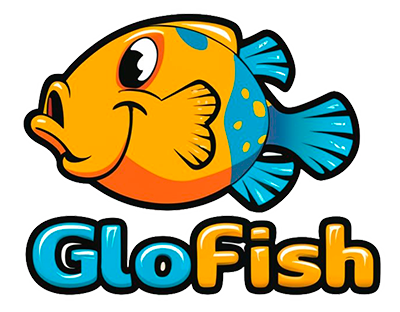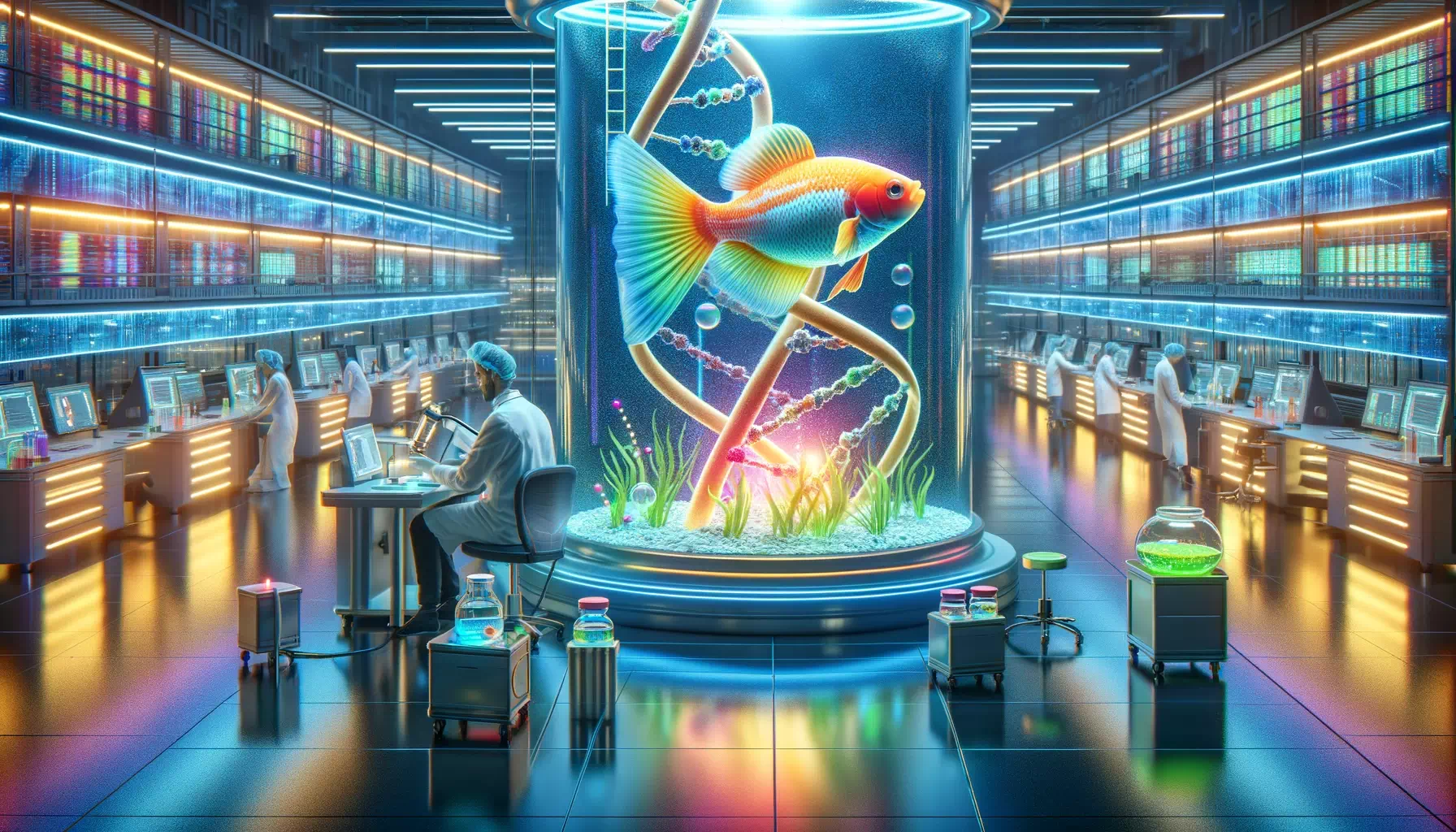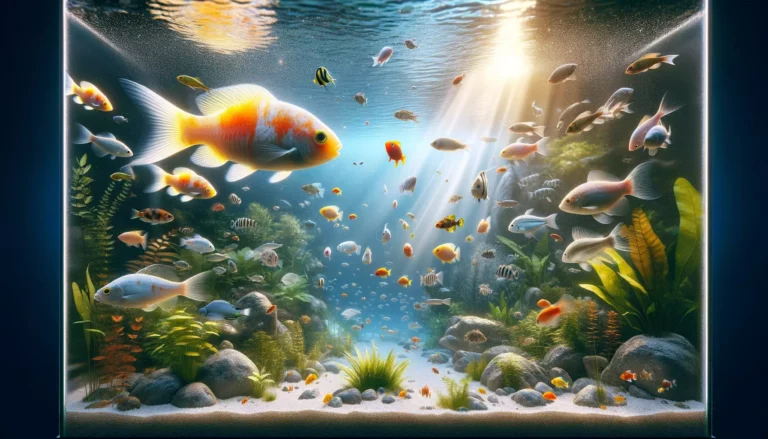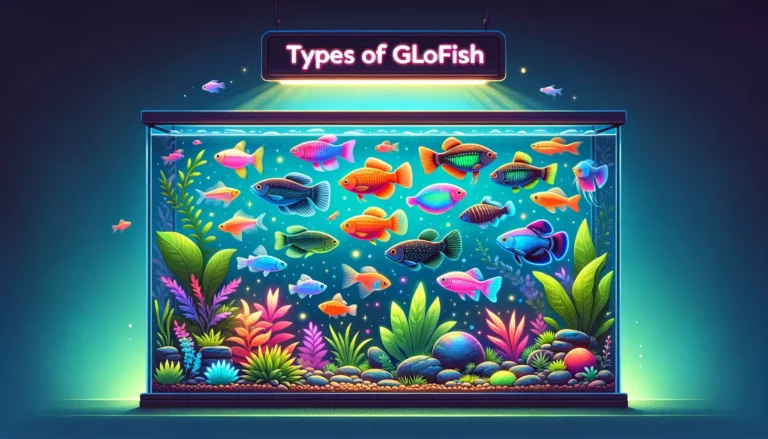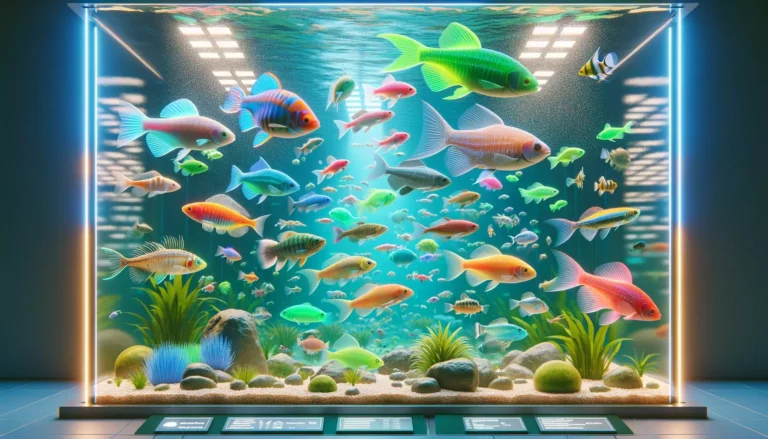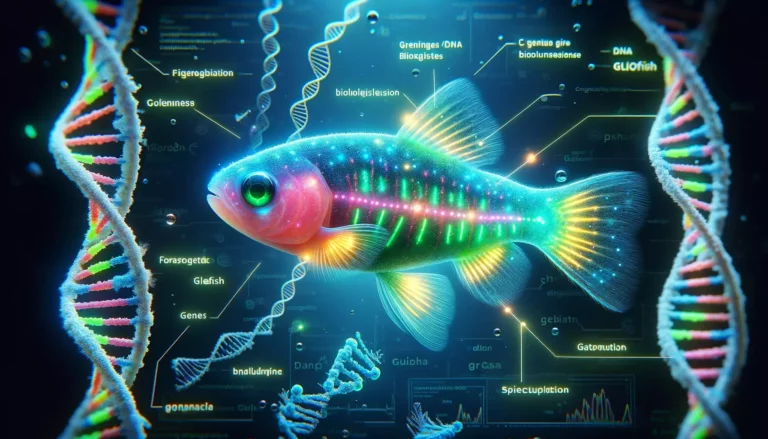The Process of Creating New GloFish with Different Colors
GloFish are a type of genetically modified fish. They glow due to a process called genetic engineering. Here, scientists introduce a gene from a fluorescent creature into a fish embryo. This gene is responsible for the production of a fluorescent protein.
The fluorescent proteins come from various sources. Jellyfish provide the green fluorescent protein (GFP). Corals contribute red, orange, and yellow proteins. Each protein emits a distinct color when exposed to ultraviolet light. This results in the vibrant colors of GloFish.
The colors of GloFish are not just skin deep. They result from the expression of fluorescent proteins throughout their bodies. This expression is possible due to the inserted genes. These genes are present in every cell, making the fish glow from inside out.
The process is precise and controlled. Scientists ensure only the desired gene gets into the fish DNA. This precision ensures the fish glow in the intended color. It also confirms the fish’s health and viability.
Types of Fish Used in Creating GloFish

GloFish are not just one type of fish. They come from various species. Each species offers unique characteristics. These characteristics make them suitable for genetic modification. The most common types are zebrafish, tetras, and barbs.
Zebrafish were the first GloFish. Scientists use them often in research. They are small, easy to care for, and breed quickly. This makes them perfect for genetic experiments.
Tetras are another popular choice. They are hardy fish, ideal for home aquariums. Their schooling nature and vibrant colors make them visually appealing.
Barbs, specifically the Tiger Barb, are also used. They are known for their striking patterns. These patterns, combined with the glow, create a stunning visual effect.
In the creation of GloFish, a variety of fish species are involved. Each species brings something unique to the aquarium. Be it their ease of care, schooling behavior, or natural patterns, they enhance the beauty of GloFish.
In both cases, science marries nature to create something extraordinary. GloFish are a testament to human ingenuity and nature’s beauty. They showcase the possibilities within genetic engineering. At the same time, they highlight the need for responsible use of this technology.
The History of the Creation of the First GloFish

The journey to the first GloFish began in the early 2000s. Scientists at the National University of Singapore had an ambitious goal. They aimed to create a fish that could detect pollution. This fish would glow in the presence of environmental toxins. Dr. Zhiyuan Gong and his team focused on a common, well-studied fish: the zebrafish.
The team used a gene from a jellyfish. This gene coded for the green fluorescent protein (GFP). They inserted this gene into the zebrafish embryos. The result was astonishing. The fish glowed a bright green under ultraviolet light.
The initial purpose was environmental. The glowing fish were to act as biosensors for water pollution. However, the potential for the pet trade was clear. A Texas-based company, Yorktown Technologies, acquired the rights to market the fish. In 2003, the GloFish became the first genetically modified animal to become a pet.
The creation of the first GloFish was a milestone. It marked the intersection of science, environmental monitoring, and the pet industry. This achievement opened the doors to new possibilities in genetic engineering.
The Genetic Modifications that Give GloFish Their Color
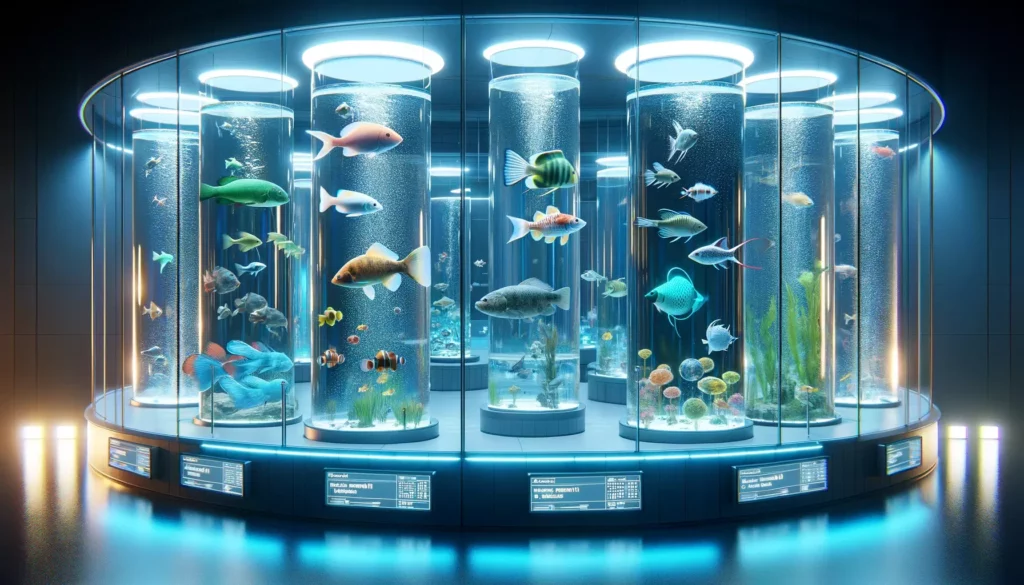
The coloration of GloFish is not due to dyes or color injections. It’s a result of genetic modification. To create GloFish, scientists insert genes from fluorescent marine organisms into fish embryos. These genes are responsible for the production of fluorescent proteins.
The process starts with the identification of a donor organism. This organism naturally produces a fluorescent protein. Common donors are jellyfish for green, corals for red, orange, and yellow, and sea anemones for purple.
Scientists then isolate the gene responsible for fluorescence. They insert this gene into the DNA of the fish embryos. This is done at a very early stage, ensuring the gene integrates into the fish’s genome.
Once the gene is in place, it becomes a part of the fish’s DNA. The fish then naturally produce the fluorescent protein throughout their bodies. The fluorescence is most visible under blue or ultraviolet light. However, the fish also show a subtle glow in normal light.
The genetic changes in GloFish are precise and specific. They result in the production of fluorescent proteins, giving the fish their vibrant colors. This genetic modification is a testament to the intricacy and potential of genetic engineering.
Time Required to Create a New Variety of GloFish
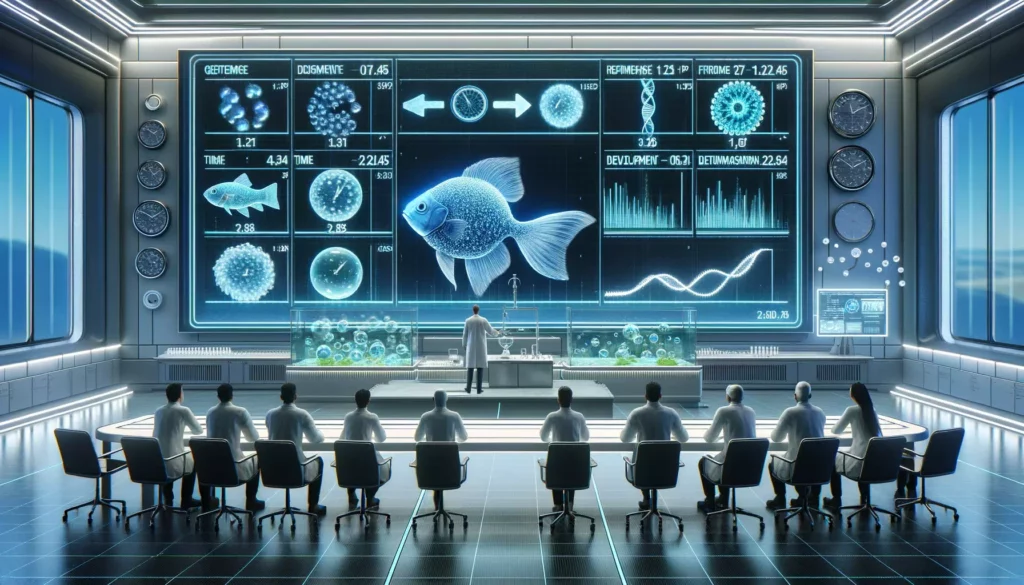
The time to create a new variety of GloFish is not fixed. It varies based on several factors. These include the complexity of the genetic modification and the breeding process. Typically, the process can span from several months to a few years.
The initial phase involves gene identification and insertion. Scientists must first find a suitable fluorescent protein gene. Then, they insert this gene into the fish embryos. This stage can take a considerable amount of time, especially if the gene insertion needs several attempts for success.
After the genetic modification, the next phase is breeding. The genetically modified fish must mature before they can reproduce. The breeding process ensures the new trait (fluorescence) is stable and heritable. It often requires several generations to confirm the trait’s stability.
Once a stable line is established, the fish must undergo rigorous testing. This ensures they are healthy and the trait is consistent. It also includes ensuring the fish’s well-being and compliance with regulations.
Creating a new variety of GloFish is a time-intensive process. It involves careful genetic modification, breeding, and testing. This ensures the fish are not only vibrant but also healthy and robust.
Technologies Used in the Creation of GloFish

The creation of GloFish involves sophisticated biotechnological methods. These methods are at the forefront of genetic engineering and breeding.
- Gene Sequencing and Synthesis: This technology identifies and synthesizes the desired fluorescent protein gene. Advanced sequencing tools ensure the correct gene is used.
- Microinjection: This technique inserts the fluorescent protein gene into fish embryos. It requires precise control and specialized equipment. Microinjection ensures the DNA integrates into the host’s genome.
- Fluorescence Microscopy: This is crucial for verifying the success of the genetic modification. Scientists use fluorescence microscopy to check if the fish glow as expected.
- Selective Breeding: Once the genetically modified fish are mature, selective breeding comes into play. This method ensures the trait is heritable and stable across generations.
- Regulatory Compliance and Quality Control: Technologies and protocols are in place to ensure the fish meet health, safety, and ethical standards. This includes regular health assessments and genetic stability checks.
The creation of GloFish utilizes a blend of advanced technologies. These ensure the genetic modification is successful and the fish are healthy. From gene sequencing to selective breeding, each step incorporates cutting-edge techniques. This maintains the integrity and quality of GloFish.
Breeding of New GloFish and Transmission of Color to Offspring
New varieties of GloFish can indeed breed and pass on their fluorescent colors to their offspring. This is because the fluorescent protein gene is integrated into their genome. When GloFish reproduce, their genetic material, including the fluorescence gene, is passed down to the next generation. This results in offspring that also possess the fluorescent trait, maintaining the distinctive coloration.
However, it’s essential to note that the breeding of GloFish is subject to regulations in many regions. These regulations often aim to control the breeding and sale of genetically modified organisms (GMOs) to ensure environmental safety and maintain ecological balance.
Precautions to Prevent Escape into Wild Populations
Given the potential ecological impacts of GloFish (or any genetically modified organism) escaping into the wild, several precautionary measures are in place:
- Regulatory Measures: The sale and breeding of GloFish are regulated in many areas. These regulations often require breeders and sellers to obtain special permits. They also mandate secure containment measures to prevent accidental release.
- Educating Fish Owners: Companies and organizations involved in the distribution of GloFish often provide educational resources. These resources emphasize the importance of responsible ownership. They discourage releasing any domestic fish into the wild.
- Sterilization Practices: In some cases, GloFish are sterilized before being sold. This prevents them from breeding if they were to escape into the wild. However, this practice is more common in other types of genetically modified organisms than in GloFish.
- Habitat Incompatibility: The domestic strains of GloFish are often less suited to survival in the wild compared to their wild counterparts. Their bright colors make them more visible to predators, and they may not possess the same level of adaptability to natural habitats. This reduces the chances of establishing a viable population should they escape.
| Precautionary Measures | Description |
|---|---|
| Regulatory Measures | – Regulations and permits for GloFish sale and breeding – Secure containment requirements |
| Educating Fish Owners | – Distribution organizations provide educational resources – Emphasize responsible ownership |
| Sterilization Practices | – Some GloFish are sterilized before sale – Prevents breeding if they escape |
| Habitat Incompatibility | – Domestic GloFish less suited for survival in the wild – Bright colors make them visible to predators – May not adapt well to natural habitats |
While GloFish can breed and pass their fluorescent trait to their offspring, strict measures are in place to prevent their escape into wild populations. These measures aim to preserve natural ecosystems and prevent the unintended consequences of introducing genetically modified organisms into the wild. They reflect a commitment to responsible biotechnology practices, balancing innovation in pet ownership with environmental stewardship.
Factors Affecting the Color Stability in GloFish
The vibrant colors of GloFish are a significant part of their appeal. However, several factors can affect the stability and intensity of their coloration:
- Genetics: The most fundamental factor is the genetic makeup of the fish. The inserted gene for fluorescence needs to be stable and consistently expressed for the fish to maintain its color.
- Age of the Fish: Like many other organisms, GloFish can change as they age. Younger fish often display more vivid colors, while older fish might have more subdued hues.
- Quality of Care: Proper nutrition is crucial. Diets rich in high-quality, nutrient-dense foods can enhance coloration. In contrast, a poor diet might lead to faded colors.
- Lighting Conditions: GloFish colors are most vibrant under certain types of light, particularly blue or black light that can make them glow. Inadequate lighting may not showcase their colors effectively.
- Water Quality: Clean, well-maintained water with the proper pH, temperature, and lack of pollutants is essential. Poor water quality can stress the fish, leading to duller colors.
- Stress Levels: Stress can impact the overall health and coloration of GloFish. Factors causing stress include improper tank mates, overcrowding, or sudden changes in the environment.
Adaptability of GloFish to Different Aquarium Conditions
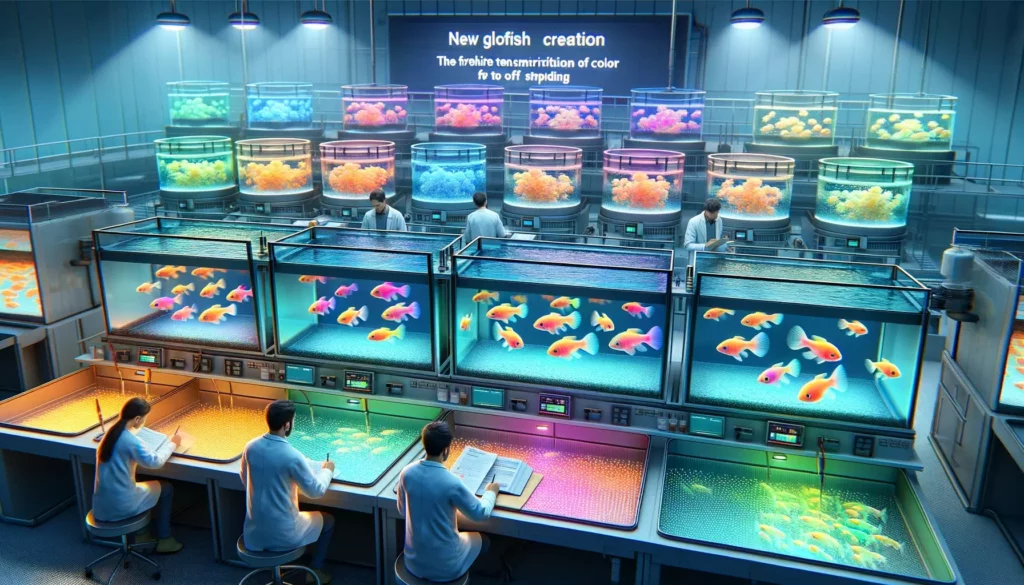
GloFish are relatively hardy and adaptable, but they do have specific requirements for their environment:
- Temperature: GloFish, like their non-genetically modified counterparts, thrive in specific temperature ranges. For example, zebrafish-based GloFish prefer temperatures between 72°F and 82°F (22°C and 28°C).
- pH Levels: Maintaining a stable pH level, typically between 6.5 and 7.5, depending on the species, is crucial for the health and well-being of GloFish.
- Tank Setup: A proper tank setup includes adequate space, filtration, and hiding places. These factors contribute to the physical and psychological well-being of the fish.
- Social Environment: Many GloFish species are social and prefer living in groups. A solitary fish might become stressed, affecting its health and color.
While GloFish are adaptable to various aquarium conditions, maintaining optimal conditions is crucial for their health and color stability. Careful attention to their environment, diet, and social needs ensures that GloFish remain vibrant and healthy throughout their lives. These considerations reflect the general principles of responsible pet ownership, emphasizing the well-being of the animals in our care.
Available Colors for GloFish and Any Limitations
GloFish are available in a variety of radiant colors. The most common colors include:
- Green: Originating from the green fluorescent protein (GFP) gene found in jellyfish.
- Red: Derived from a protein found in sea anemones.
- Orange-Yellow: Coming from variations of the GFP gene or from coral proteins.
- Blue: Resulting from a modified version of the GFP gene or other marine organisms.
- Purple: A relatively newer addition, developed by blending the genes from different fluorescent proteins.
While these colors are vibrant, they are subject to regulatory and ethical considerations. In some regions, the sale or ownership of GloFish might be regulated or even prohibited. This is due to concerns about genetic modification and potential environmental impacts if the fish were to be released into the wild.
Care Considerations for Different Colors of GloFish
While the care requirements for GloFish are generally consistent across different colors, a few specific considerations might enhance their wellbeing and coloration:
- Lighting: Proper lighting is crucial. Specific wavelengths of light can make the colors of GloFish more vibrant, especially in a dark room. Aquariums with blue or black lights can especially enhance the fluorescence of GloFish.
- Diet: Some specialized fish foods are formulated to enhance the natural coloration of aquarium fish. These foods often contain high-quality ingredients and color-enhancing compounds.
- Tank Background and Decor: The color of the tank’s background and the decor can contrast or complement the colors of your GloFish. Lighter backgrounds and certain colors of gravel or plants can make your GloFish’s colors stand out more.
- Stress Reduction: Stress can dull the colors of GloFish. Ensuring a peaceful tank environment, proper social interactions (especially for schooling species), and stable water conditions is important.
- Water Quality: Regular maintenance of water quality, including proper filtration, temperature control, and regular water changes, is vital. Poor water quality can lead to stress and disease, affecting the fish’s color and overall health.
| Care Considerations | Description |
|---|---|
| Lighting | – Use specific wavelengths of light for vibrant colors – Blue or black lights enhance fluorescence |
| Diet | – Feed color-enhancing fish foods with high-quality ingredients |
| Tank Background and Decor | – Choose contrasting or complementary tank decor and gravel colors |
| Stress Reduction | – Ensure a peaceful tank environment and social interactions for schooling species |
| Water Quality | – Maintain proper filtration, temperature, and regular water changes |
While GloFish are relatively hardy, attention to specific care aspects can help maintain their health and vibrant colors. These considerations highlight the importance of a tailored approach to aquarium maintenance, respecting the unique needs of these genetically modified pets.
Coexistence of Different Colors of GloFish in One Aquarium
Different colors of GloFish can indeed coexist peacefully in the same aquarium. The color of a GloFish does not influence its behavior; rather, behavior is more a factor of the species. For example, GloFish that are genetically modified versions of zebrafish, tetras, or barbs will exhibit behaviors typical of their species, regardless of their color. This means that if the base species are known to be community-friendly and non-aggressive, their GloFish counterparts will be too.
Selecting Tank Mates for GloFish of Different Colors
When choosing tank mates for GloFish, consider the following:
- Species Compatibility: Ensure the tank mates are compatible in terms of species. For instance, GloFish derived from zebrafish should be housed with species that are known to be compatible with zebrafish.
- Temperament: Choose tank mates that have a similar temperament. Peaceful species should be housed with other peaceful species to avoid stress and aggression.
- Size and Space: Make sure the aquarium is spacious enough to accommodate all the fish comfortably. Crowding can lead to stress and aggression.
- Water Conditions: All inhabitants should thrive in similar water conditions (temperature, pH, hardness).
- Feeding Requirements: Tank mates should have similar dietary needs to ensure all fish receive proper nutrition.
Advantages and Disadvantages of Different Colored GloFish Varieties
Advantages:
- Aesthetic Appeal: The primary advantage of GloFish is their vibrant colors, which add a unique and visually stunning element to aquariums.
- Variety: The range of available colors allows for customization and personalization of the aquarium.
- Educational Value: GloFish can be used to educate about genetic engineering, fluorescence, and marine biology.
Disadvantages:
- Regulatory Restrictions: In some regions, the ownership and breeding of GloFish might be restricted.
- Ethical Considerations: There are ethical debates regarding the genetic modification of animals for aesthetic purposes.
- Special Care Needs: While care requirements are not drastically different, GloFish may require specific lighting to truly showcase their colors, which can mean additional equipment and cost.
- Limited Compatibility: As with any fish, there are limitations on which species can be housed together, regardless of color. This requires careful planning when setting up an aquarium.
In summary, different colors of GloFish can live together harmoniously, provided their species and care requirements are compatible. When setting up a GloFish aquarium, it’s important to consider both the aesthetic desires of the hobbyist and the biological and environmental needs of the fish. This approach ensures a healthy, stress-free environment for the fish and a rewarding experience for the aquarium enthusiast.
